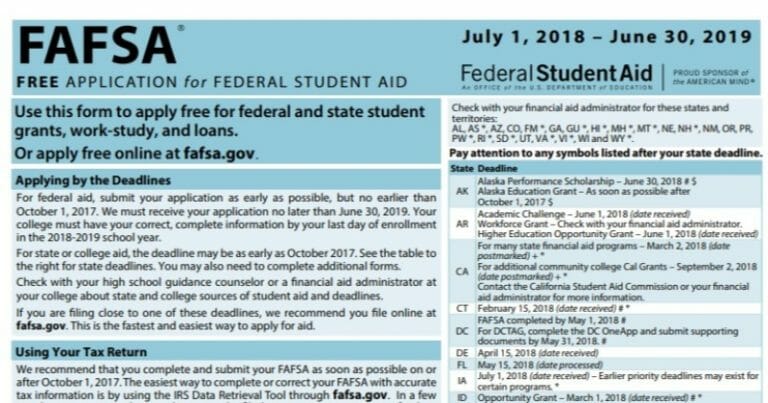The forgiveness fairy granted your wish and discharged your student loans. Are you done with your student loan debt? Not quite. You may have to pay taxes on the cancelled student loans, since the IRS considers some loan forgiveness taxable income to the borrower.
The government gives with one hand while taking back with the other. They replace your student loan debt with a tax debt.
⚠️ IMPORTANT: Tax-Free Student Loan Forgiveness Ends December 31, 2025
Thanks to the American Rescue Plan Act of 2021, most federal student loan forgiveness is currently tax-free through the end of 2025. However, starting January 1, 2026, many types of loan forgiveness will automatically become taxable again unless Congress extends the exemption. Understanding these upcoming tax implications is essential for your financial planning if you’re pursuing loan forgiveness.
It doesn’t seem fair, but it makes a weird kind of sense.
When any kind of debt, including student loans, is discharged or forgiven, it’s as though someone else gave you money to pay off all or part of your debt. The IRS treats this loan cancellation as though it were income to you.
So, unless Congress passes a law to exclude the specific type of loan forgiveness from income, you will have to pay taxes on it.
How Student Loan Forgiveness Taxes Work
You will receive an IRS Form 1099-C (Cancellation of Debt) from the lender if the amount of cancelled debt is $600 or more. You must report the amount in Box 2 on the “Other Income” line of your federal income tax return.
Even if the amount discharged is less than $600, you must report it on your federal income tax return.
The good news is that the tax debt from the loan forgiveness will be lower than the student loan debt. How much you’ll owe depends on how the forgiven amount interacts with our progressive tax system.
Here’s what you need to know: When student loan forgiveness gets added to your taxable income, it doesn’t all get taxed at one rate. Instead, it gets taxed as it passes through each tax bracket, with only the portion in each bracket taxed at that rate.
For example, if you’re single and currently earn $50,000, you’re paying taxes across the 10%, 12%, and 22% brackets. If you then receive $10,000 in loan forgiveness, that additional income will be taxed at 22% because it sits entirely within your current top bracket. But if you receive $40,000 in forgiveness, only part of it gets taxed at 22%—the rest might be taxed at 24% or even higher as it pushes you into new brackets.
The key factor: Your actual tax bill depends on your existing income and filing status, not just the forgiveness amount.
The even better news? Some types of student loan discharges and student loan forgiveness are tax-free.
What’s Tax-Free Only Through December 31, 2025
The following types of forgiveness are currently tax-free but will become taxable starting January 1, 2026, unless Congress extends the exemption:
- Death and disability discharges – The exclusion from income for student loan death and disability discharges, which has been in effect from 2018 through 2025, is set to expire.
- Income-driven repayment (IDR) forgiveness – The cancellation of remaining debt after 20 or 25 years in income-driven repayment plans is currently tax-free through 2025. Starting in 2026, borrowers receiving IDR forgiveness could face a significant tax bill, often called the “IDR tax bomb.”
Understanding the IDR Tax Bomb (Starting 2026)
If you’re on an income-driven repayment plan and expect forgiveness in 2026 or later, you must prepare for potential tax liability. Calculating your exact bill is complex because of how progressive taxation works, but here’s how to think about it:
How progressive taxation affects your bill:
The forgiven amount gets added on top of your existing income and taxed as it climbs through the tax brackets. This means:
- Lower forgiveness amounts (under $30,000) for middle-income borrowers will likely face effective tax rates of 15-25% on the forgiven amount
- Moderate forgiveness amounts ($30,000-$75,000) could face effective rates of 20-28% as they span multiple brackets
- High forgiveness amounts (over $75,000) for higher earners could face effective rates of 25-35% or more
Example scenarios for 2026 tax brackets (approximate):
- Single borrower earning $60,000 with $50,000 forgiven: roughly $10,000-$13,000 tax bill
- Married couple earning $100,000 with $100,000 forgiven: roughly $20,000-$26,000 tax bill
- Single borrower earning $80,000 with $150,000 forgiven: roughly $42,000-$52,000 tax bill
These estimates assume current tax bracket structures continue through 2026. Your actual liability will vary based on your specific income, filing status, deductions, and the tax brackets in effect when you receive forgiveness.
What you should do now: If you expect IDR forgiveness in 2026 or beyond, start setting aside money for the potential tax liability. A conservative approach is to save 25-30% of your expected forgiveness amount. Consider opening a dedicated savings account and contributing monthly to prepare for this tax bill. You can also consult a tax professional as you approach your forgiveness date to get a more precise estimate based on your circumstances.
What Remains Tax-Free After 2025
These types of student loan forgiveness will continue to be tax-free even after December 31, 2025:
Public Service Loan Forgiveness (PSLF)
If you work in one of several occupations for a specified amount of time, the student loan forgiveness will be excluded from income.
The specific occupations include teachers, nurses, doctors, dentists, veterinarians, public defenders, prosecutors, and other public service jobs.
The eligible loan forgiveness programs include Public Service Loan Forgiveness, Teacher Loan Forgiveness, National Health Service Corps Loan Repayment, and state programs funded by the Public Health Service Act.
Federal Perkins Loan forgiveness
Federal Perkins Loan cancellation is tax-free for borrowers who work in qualifying public service occupations, including:
- Education professionals: Teachers serving low-income students, special education teachers, Head Start employees, STEM and foreign language teachers in shortage areas, school librarians, public librarians serving low-income students, speech language pathologists, and faculty members at Tribal Colleges and Universities
- Healthcare workers: Nurses and medical technicians
- Military and public safety: Members of the U.S. Armed Forces, law enforcement and corrections officers, and firefighters
- Legal professionals: Public defenders
- Volunteers: Peace Corps volunteers
Borrower defense discharges
Closed school discharges, false certification discharges, and unpaid refund discharges are tax-free.
What’s Already Taxable
Some types of student loan cancellation and discharge are taxable to the borrower right now and will remain so:
- Student loan repayment assistance programs (LRAPs) provided by employers and the federal government’s Office of Personnel Management.
What If You Can’t Afford the Tax Bill?
The IRS may waive the tax liability from the discharge of student loans if the borrower is insolvent. You are considered insolvent if your total debt exceeds your assets. To claim this exclusion from income, file IRS Form 982. For more information, read IRS Publication 4681.
If you aren’t insolvent, you can try negotiating an offer in compromise by filing IRS Form 656. This form must be filed by a tax professional, not the taxpayer.
If you don’t qualify for the insolvency exclusion or an offer in compromise, you can request a payment plan for up to six years using IRS Form 9465. Depending on your tax bracket, the monthly payment under the payment plan will be about a third of the previous student loan payment, but could be anywhere from 15% to 66%.
If you are struggling with student loans, there are ways you could lower your monthly payment, including enrolling in an income-driven repayment plan, applying for a temporary deferment, and refinancing student loans for a lower interest rate. However, refinancing federal loans into a private loan means a loss in benefits – income-driven repayment plans, any federal loan forgiveness programs, generous deferment options, and more.



